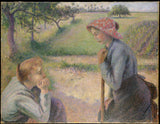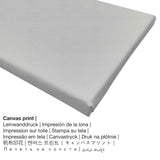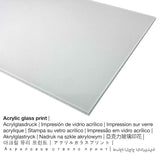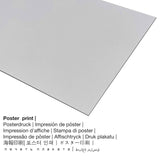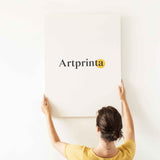Camille Pissarro, 1891 - Ụmụ nwanyị na-eto eto na-eto eto - mbipụta nka mara mma
Ụtụ gụnyere. Mbupu gbakọrọ na ndenye ọpụpụ.
N’afọ 1891 onye France na-ese ihe Camille Pissarro created this impressionist artwork named Two Young Peasant Women. The version of the artpiece was made with the size of 35 1/4 x 45 7/8 na (89,5 x 116,5 cm) ma kpụrụ ya na ọkara mmanụ na kwaaji. The work of art is in the the The Metropolitan Museum of Art's digital art collection located in New York City, New York, Njikota Obodo Amerika. With courtesy of: The Metropolitan Museum of Art, New York, Gift of Mr. and Mrs. Charles Wrightsman, 1973 (nwere ikike: ngalaba ọha). Ọzọkwa, ihe nkiri ahụ nwere akara kredit ndị a: Onyinye nke Mr. na Oriakụ Charles Wrightsman, 1973. N'elu nke ahụ, nhazi nke mmepụta dijitalụ bụ odida obodo ya na oke nke 4: 3, nke pụtara na ogologo bụ 33% ogologo karịa obosara. The artist, painter Camille Pissarro was an artist, whose style can be attributed primarily to Impressionism. The French artist was born in the year 1830 in Charlotte Amalie, Virgin Islands of the United States and passed away at the age of 73 in the year 1903.
Kedu ụdị akwụkwọ ebipụta m nwere ike iburu?
We offer a range of different sizes and materials for every product. You can choose your favorite size and material between the following choices:
- Bipụta akwụkwọ mmado n'ihe kwaaji: The poster print is a printed canvas with a slightly rough texture on the surface. A printed poster is suited for placing your fine art print with the help of a custom-made frame. Please bear in mind, that depending on the absolute size of the poster we add a white margin of around 2-6cm round about the artwork, which facilitates the framing with a custom frame.
- Kwaaji: A canvas print is a printed canvas mounted on a wood stretcher. A canvas generates a special look of three-dimensionality. What is more, printed canvas creates a familiar and comfy feeling. A canvas of your favorite artpiece will give you the unique opportunity to transform your fine art print into a large artpiece. Canvas Prints have the advantage of being relatively low in weight, which means that it is easy and straightforward to hang your Canvas print without extra wall-mounts. That is why, a canvas print is suited for any kind of wall.
- Aluminom dibond (ọkpụkpụ ọla): An Aluminium Dibond print is a print material with an outstanding effect of depth - for a modern look and non-reflective surface structure.
- Mbipụta iko acrylic (nke nwere ezigbo mkpuchi iko): A glossy print on acrylic glass, which is sometimes named as a print on plexiglass, changes the artwork into amazing décor. Your artwork is printed with modern UV direct printing machines. The major advantage of a plexiglass print is that contrasts plus smaller painting details become more visible with the help of the precise gradation.
Nkwupụta iwu: We try everything to depict the art products in as much detail as possible and to exhibit them visually in our shop. Nonetheless, the tone of the printing material and the print result may vary somehwat from the representation on the device's screen. Depending on the settings of your screen and the quality of the surface, not all colors can be printed 100% realistically. Since all the art reproductions are printed and processed manually, there might also be minor discrepancies in the motif's size and exact position.
Ngwaahịa a
| Bipụta ngwaahịa: | nka nka |
| Mmeputakwa: | dijitalụ mmeputakwa |
| Usoro nhazi: | mbipụta dijitalụ |
| Production: | German mmepụta |
| Stockdị ngwaahịa: | na mmepụta ihe |
| Ngwaahịa were: | imewe ụlọ, ụlọ ihe osise nka |
| Ndepụta: | nhazi odida obodo |
| Oke akụkụ onyonyo: | 4: 3 ogologo ruo obosara |
| Mmetụta akụkụ: | ogologo bụ 33% ogologo karịa obosara |
| Ihe mmeputakwa dị: | akwụkwọ mmado (akwụkwọ kwaaji), mbipụta ọla (aluminium dibond), mbipụta kanvas, mbipụta iko acrylic (nwere ezigbo mkpuchi iko) |
| Nhọrọ nke Canvas Mbipụta (akwa akwa na etiti ihe ndọtị): | 40x30cm - 16x12", 80x60cm - 31x24", 120x90cm - 47x35", 160x120cm - 63x47" |
| Mpempe iko acrylic (nwere ezigbo mkpuchi iko) nha: | 40x30cm - 16x12", 80x60cm - 31x24", 120x90cm - 47x35", 160x120cm - 63x47" |
| Mbipụta akwụkwọ mmado (akwụkwọ kwaaji): | 40x30cm - 16x12", 80x60cm - 31x24", 120x90cm - 47x35" |
| Nha ebipụta aluminom: | 40x30cm - 16x12", 80x60cm - 31x24", 120x90cm - 47x35" |
| ụba: | biko buru n'uche na ngwaahịa a enweghị okpokolo agba |
Nkọwa gbasara ọrụ nka mbụ
| Aha nke eserese ahụ: | "Two Young Peasant Women" |
| Nhazi nka: | sere |
| Nhazi nka: | nkà nke oge a |
| oge: | 19th narị afọ |
| Emepụtara n'afọ: | 1891 |
| Ogologo afọ nka nka: | ihe karịrị 120 afọ |
| Usoro izizi: | mmanụ na kwaaji |
| Nha izizi: | 35 1/4 x 45 7/8 na (89,5 x 116,5 cm) |
| Egosiputara na: | Museumlọ ihe ngosi nka nke Obodo |
| Ebe ebe ngosi nka: | New York City, New York, Njikota Obodo Amerika |
| E Nwere na: | Museumlọ ihe ngosi nka nke Obodo |
| Ikikere nke ihe osise: | ngalaba ọha |
| Site n'aka: | Ụlọ ihe ngosi nka nke Metropolitan, New York, Onyinye nke Mr. na Oriakụ Charles Wrightsman, 1973 |
| kreditline ọrụ nka: | Onyinye nke Mr. na Oriakụ Charles Wrightsman, 1973 |
Ozi izugbe gbasara onye na-ese ihe
| Ihe nkiri: | Camille Pissarro |
| A makwaara dịka: | Pisarro Camille, pissarro c., Pissaro Camille Jacob, camille pissaro, Pissarro Jacob-Abraham-Camille, Pissaro, Pissarro, pissarro c.f., Pissarro C., camillo pissarro, פיסארו קמי, Pissarro Camille Jacob, Pissarro Jacob Abraham Camille, פיסארו קאמי, Pissarro Camille, Pisaro Ḳami, Camille Jacob Pissarro, c. pissarro, Pissaro Camille, camille pisarro, Camille Pissarro, c. pissaro |
| Gender: | nwoke |
| Obodo onye nka: | French |
| Ọrụ: | onye na-ese ihe, omenkà |
| Obodo onye nka: | France |
| Nhazi nke onye nka: | omenkà nke oge a |
| Ụdị nka: | Mmetụta |
| Oge ndu: | 73 afọ |
| A mụrụ: | 1830 |
| Ebe omuma: | Charlotte Amalie, Virgin Islands nke United States |
| Afọ nwụrụ: | 1903 |
| Ebe ọnwụ: | Paris, Ile-de-France, France |
© Nwebiisinka - ikike ọgụgụ isi nke, Artprinta.com
Additional information as provided from The Metropolitan Museum of Art (© - nke Ụlọ ihe ngosi nka nke Obodo ukwu - Museumlọ ihe ngosi nka nke Obodo)
By virtue of their size, placement, and quiet dignity, these youthful laborers dominate the landscape setting—an open field near Pissarro’s house at Éragny. Sympathetic to anarchist ideals, the artist wanted to preserve the values of agrarian society that were being threatened by the rapid industrialization of France. He began this picture in summer 1891 and completed it in mid-January 1892, a month before the opening of a major exhibition of his work organized by his dealer Joseph Durand-Ruel. Many of the fifty paintings were sold from the show, but Pissarro kept this canvas and gave it to his wife.

